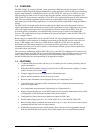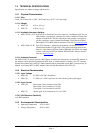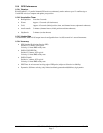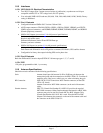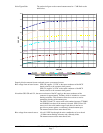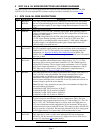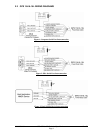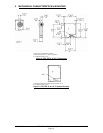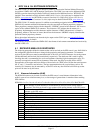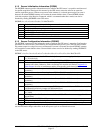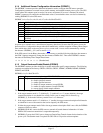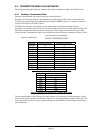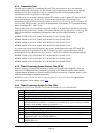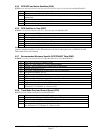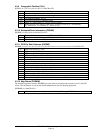
190-00266-01 GPS 15H & 15L Technical Specifications Rev. D
Page 11
4 GPS 15H & 15L SOFTWARE INTERFACE
The GPS 15H & 15L interface protocol design on COM 1 is based on the National Marine Electronics
Association’s NMEA 0183 ASCII interface specification. The COM 2 port can receive differential GPS
(DGPS) correction data using the Radio Technical Commission for Maritime Services’ RTCM SC-104
standard. These standards are fully defined in NMEA 0183, Version 3.0 (copies may be obtained from
NMEA,
www.nmea.org) and RTCM Recommended Standards For Differential Navstar GPS Service,
Version 2.2, RTCM Special Committee No.104 (copies may be obtained from RTCM,
www.rtcm.org).
The GPS 15H & 15L interface protocol, in addition to transmitting navigation information as defined by
NMEA 0183, transmits additional information using the convention of Garmin proprietary sentences.
These proprietary sentences begin with the characters, “$PGRM”, instead of the characters “$G” that are
typical of the standard NMEA 0183 sentences. The characters “$P” indicate that the sentence is a
proprietary implementation and the characters and the characters “GRM” indicate that it is Garmin’s
proprietary sentence. The letter (or letters) that follow the characters “$PGRM” uniquely identifies that
particular Garmin proprietary sentence.
Binary phase data information can alternatively be output on the COM 1 port; see
Appendix B: Binary
Phase Output Format
for details.
The following sections describe the NMEA 0183 data format of each sentence transmitted and received by
the GPS 15H & 15L.
4.1 RECEIVED NMEA 0183 SENTENCES
The following paragraphs define the sentences that can be received on the GPS sensor’s port. Null fields in
the configuration sentence indicate no change in the particular configuration parameter. All sentences
received by the GPS sensor must be terminated with <CR><LF>, the ASCII characters for carriage return
(0D hexadecimal) and line feed (0A hexadecimal), respectively. The checksum *hh is used for parity
checking data and is recommended for use in environments containing high electromagnetic noise. It is
generally not required in normal PC environments. When used, the parity bytes (hh) are the ASCII
representation of the upper and lower nibbles of the exclusive-or (XOR) sum of all the characters between
the “$” and “*” characters, non-inclusive. The hex representation must be a capital letter, such as 3D
instead of 3d. Sentences may be truncated by <CR><LF> after any data field and valid fields up to that
point will be acted on by the sensor.
4.1.1 Almanac Information (ALM)
The $GPALM sentence can be used to initialize the GPS sensor’s stored almanac information in the
unlikely event of non-volatile memory loss, or after storage of greater than six months without tracking
GPS satellites.
$GPALM,<1>,<2>,<3>,<4>,<5>,<6>,<7>,<8>,<9>,<10>,<11>,<12>,<13>,<14>,<15>*hh<CR><LF>
<1> Total number of ALM sentences to be transmitted by the GPS sensor during almanac
download. This field can be null or any number when sending almanac to the GPS sensor.
<2> Number of current ALM sentence. This field can be null or any number when sending
almanac to the GPS sensor.
<3> Satellite PRN number, 01 to 32
<4> GPS week number
<5> SV health, bits 17-24 of each almanac page
<6> Eccentricity
<7> Almanac reference time
<8> Inclination angle
<9> Rate of right ascension
<10> Root of semi major axis
<11> Omega, argument of perigee
<12> Longitude of ascension node
<13> Mean anomaly
<14> af0 clock parameter
<15> af1 clock parameter



